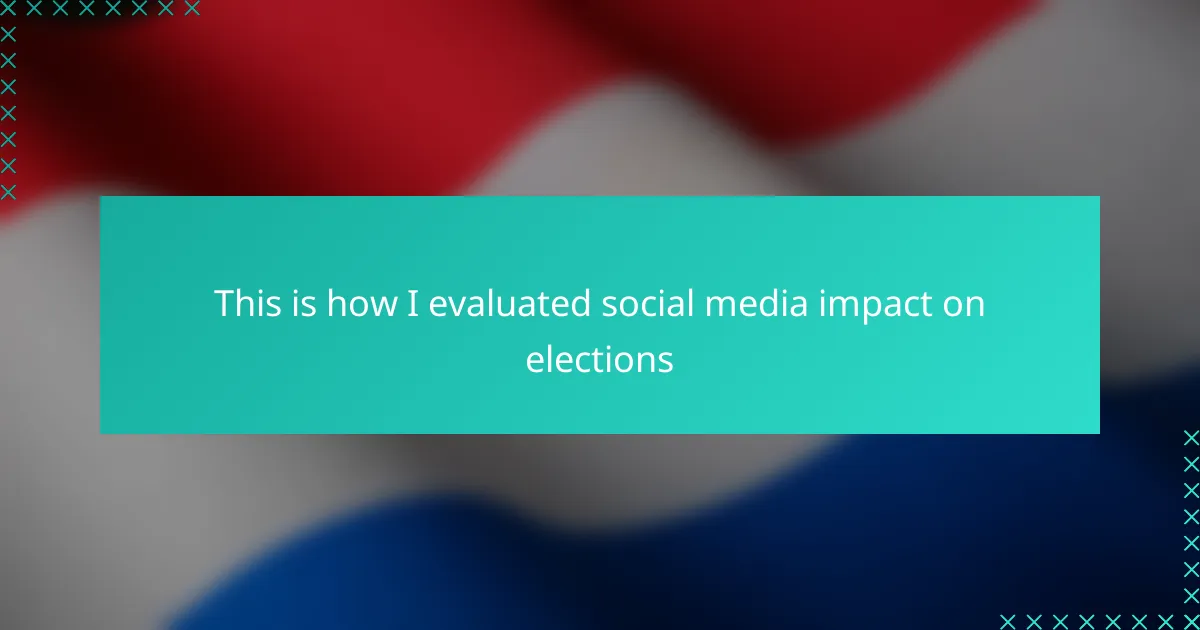Key takeaways
- Social media’s rapid information spread influences public opinion more than traditional media, often creating echo chambers that reinforce existing beliefs.
- Key metrics such as reach, engagement rates, and sentiment analysis are essential for understanding social media’s impact on voter behavior and election outcomes.
- The complexity of assessing social media effects is heightened by diverse platforms, algorithms, and the fluid nature of information, making it challenging to discern genuine influence from transient trends.
- Personal biases and emotional dynamics play a significant role in analyzing social media, highlighting the need for broader perspectives and an understanding of collective moods during elections.
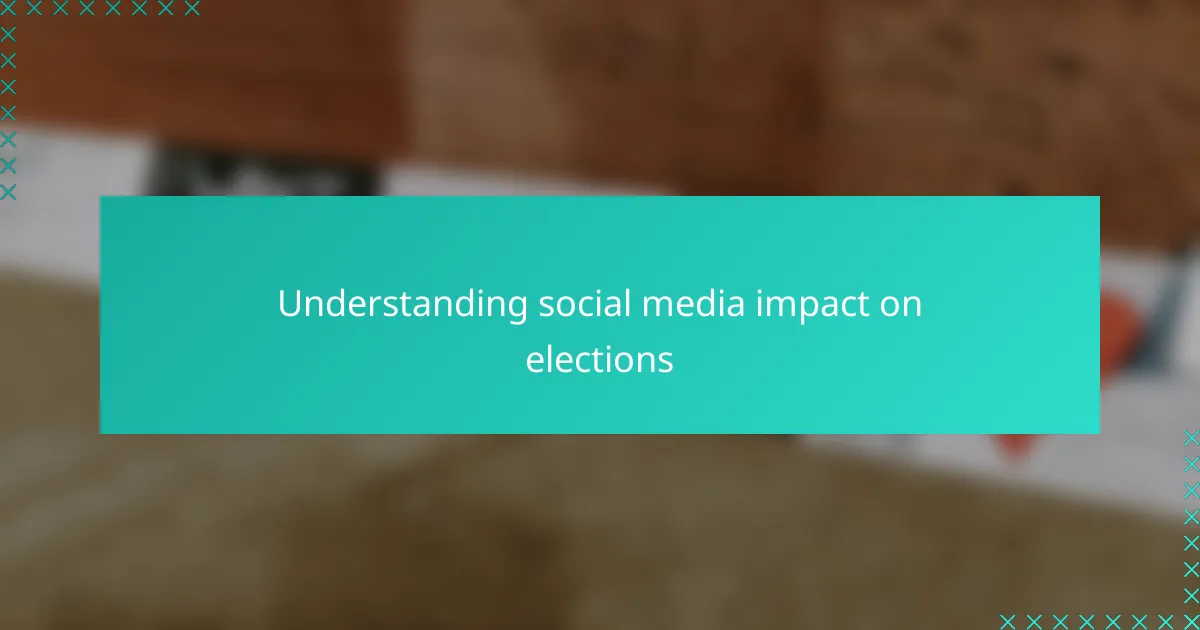
Understanding social media impact on elections
When I first started examining the intersection of social media and elections, I was struck by how quickly information spreads—sometimes faster than fact-checkers can keep up. Have you ever noticed how a single tweet can ignite nationwide debates overnight? This immediacy shapes public opinion in ways traditional media never truly did.
What fascinates me most is how social media platforms act as echo chambers, reinforcing existing beliefs while sometimes shutting down genuine dialogue. I remember diving into comment threads that felt less like conversations and more like battles, which made me wonder: are we choosing our own information bubbles without even realizing it?
Moreover, the emotional charge behind shared posts often matters more than the content’s accuracy. From my perspective, understanding this emotional dynamic is crucial to grasping the real impact social media has on voter behavior and election outcomes. After all, what moves people to act in voting booths usually stems from feelings stirred online.
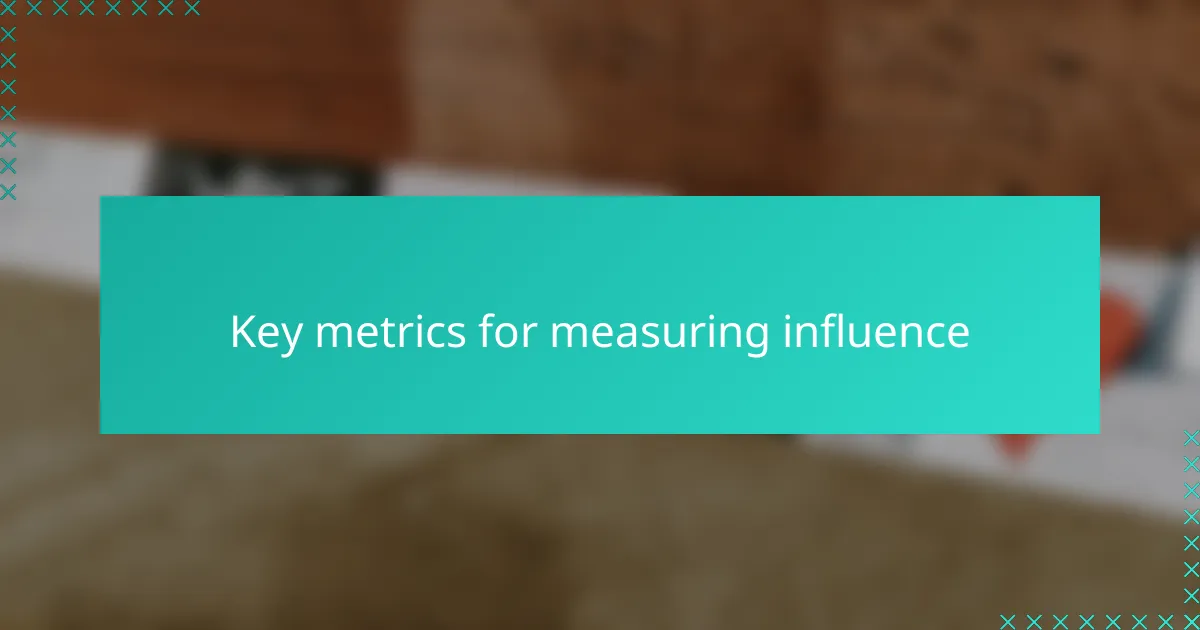
Key metrics for measuring influence
When I started measuring social media’s influence on elections, one of the first metrics I focused on was reach—the sheer number of people exposed to a post or hashtag. It’s amazing how a viral tweet can extend its reach far beyond an initial audience, but I quickly realized reach alone doesn’t tell the whole story.
Engagement rates became my next obsession. Likes, shares, comments—these interactions speak volumes about whether content resonates or merely drifts by unnoticed. I often asked myself, are people truly influenced when they engage, or are they just passing time? From my experience, higher engagement often signals stronger emotional impact, which can sway opinions more deeply than raw numbers suggest.
Another key metric I found invaluable was sentiment analysis, which measures the tone of online conversations—positive, negative, or neutral. Running these analyses felt like trying to capture an election’s emotional pulse in real-time. It made me wonder: can we predict voter behavior by tracking shifts in online sentiment? In many cases, shifts in digital mood mirrored real-world political momentum.
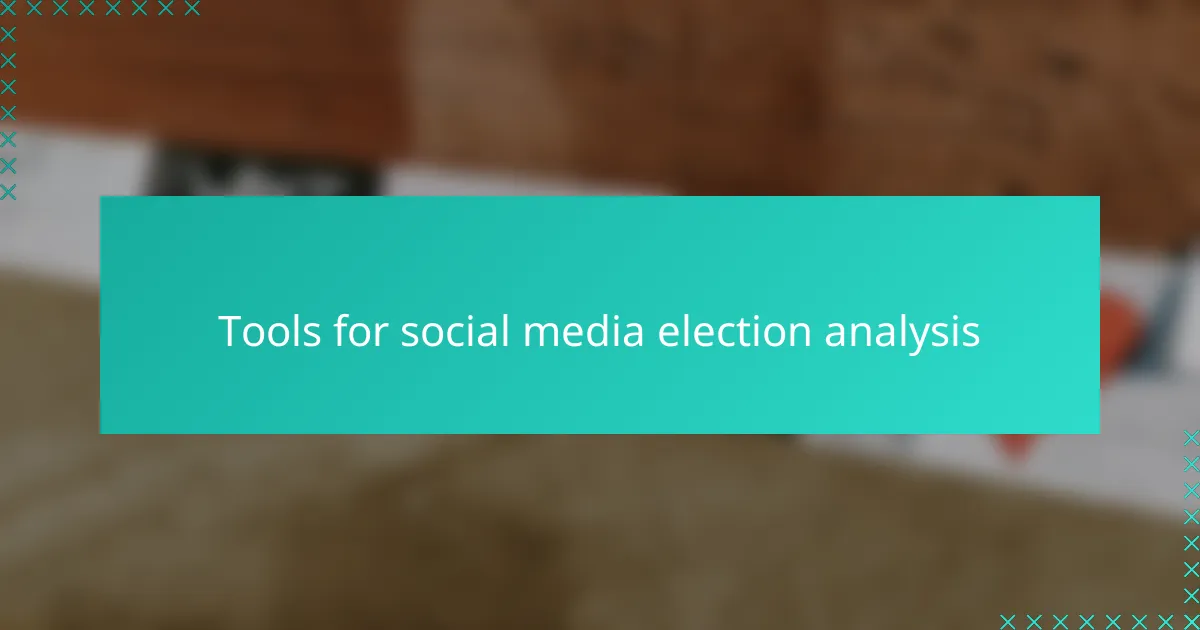
Tools for social media election analysis
When I first dipped my toes into social media election analysis, tools like Brandwatch and CrowdTangle became my go-to companions. These platforms allowed me to track trending topics and hashtags with impressive granularity, almost like having a front-row seat to the digital battleground. Have you ever thought about how much data lies beneath a single hashtag? These tools helped me uncover patterns that were otherwise invisible.
I also leaned heavily on sentiment analysis APIs, such as those from Google Cloud or IBM Watson. Their ability to sift through thousands of posts and assign an emotional tone felt like having a mood ring for the public’s political leanings. From my experience, integrating these tools made the abstract concept of “online mood” tangible, revealing when optimism or outrage was bubbling up before it hit mainstream media.
Of course, no analysis felt complete without network visualization software like Gephi. Seeing clusters of conversations and influential nodes mapped out visually was a revelation. I often found myself asking: who really drives the dialogue, and how do echo chambers form online? This graphical perspective turned complex data into a story I could follow, making my analysis more insightful and, frankly, a lot more engaging.
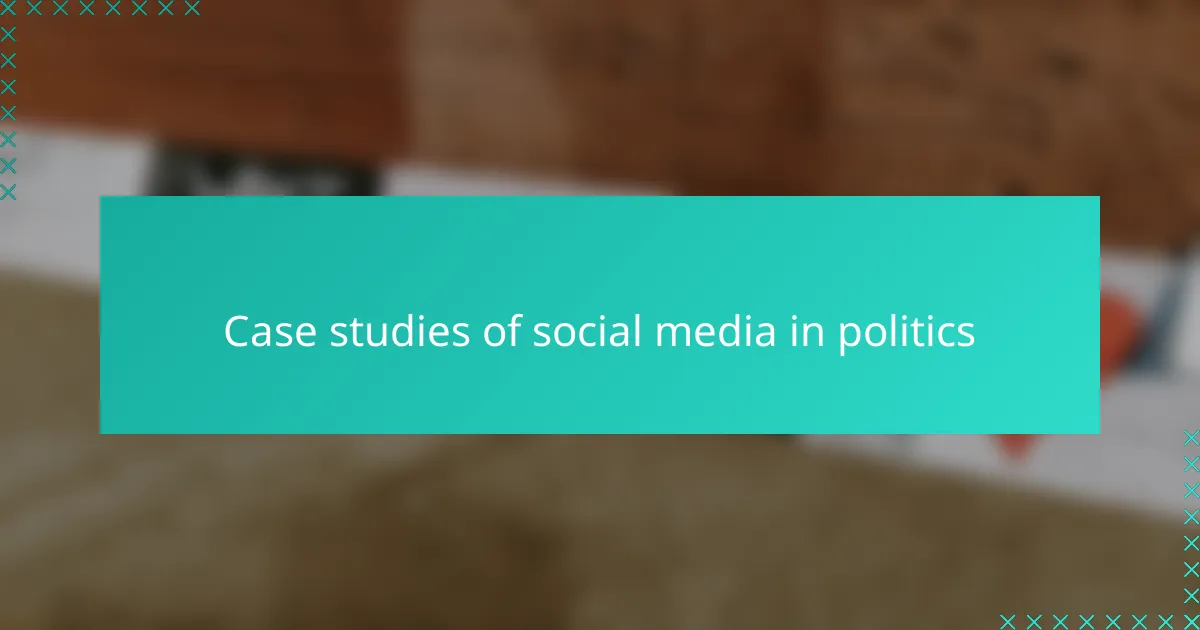
Case studies of social media in politics
One case that really caught my attention was the 2016 US presidential election, where social media not only amplified campaign messages but also became a battleground for misinformation. I remember how quickly viral falsehoods spread, sometimes drowning out verified facts—did anyone else feel the digital chaos was almost impossible to navigate? This experience highlighted for me how social media can sway voter perceptions in unpredictable ways.
Then there was the 2019 Indian general election, where parties harnessed WhatsApp and Facebook to target specific demographics with tailored messages. Witnessing this micro-targeting in action made me realize how sophisticated and strategic social media campaigns have become. It left me pondering: are voters truly choosing freely, or are algorithms quietly shaping their political realities?
The 2020 US election also provided a fascinating lesson. I observed how real-time fact-checking efforts on platforms like Twitter tried to counteract false claims, but the speed and scale were overwhelming. From my perspective, this tug-of-war between truth and misinformation underscored social media’s double-edged role—both a tool for engagement and a catalyst for division. It’s a reminder that evaluating impact means looking beyond numbers to what these platforms do to our political discourse.
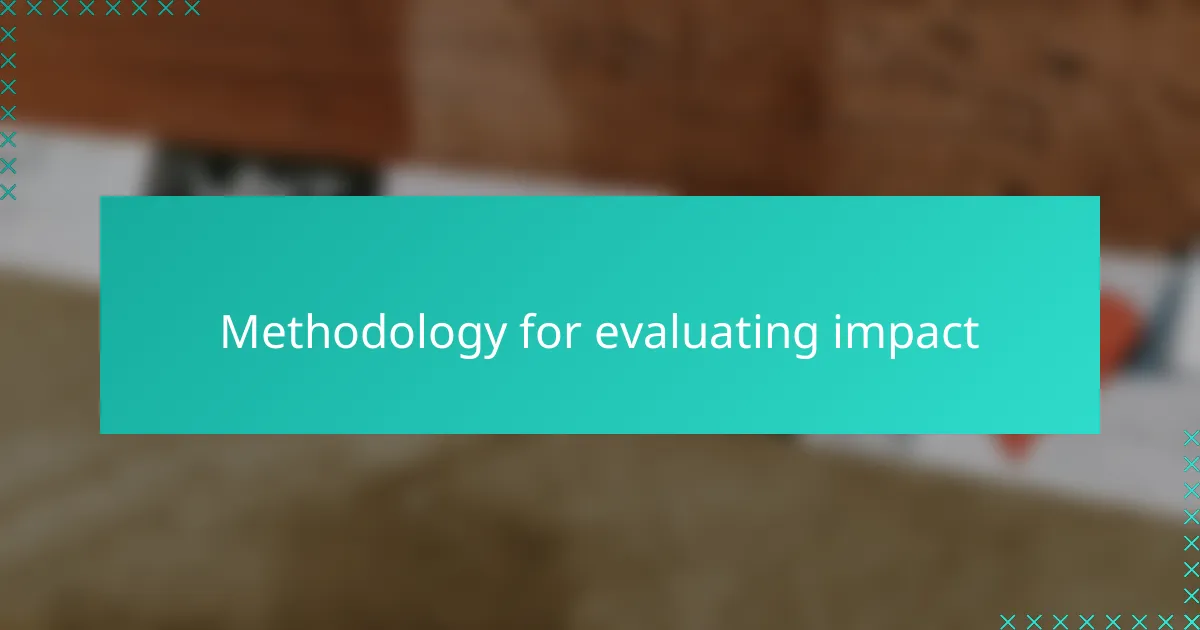
Methodology for evaluating impact
To evaluate social media’s impact on elections, my starting point was designing a framework that combined quantitative data with qualitative insights. I asked myself: how can I capture not just the volume of activity, but the meaning behind it? This led me to blend metrics like reach and engagement with sentiment and network analysis, aiming for a more nuanced picture.
I remember early on grappling with the challenge of isolating social media’s direct influence from other external factors shaping voter behavior. It was like trying to hear a single instrument within a whole orchestra. To tackle this, I employed comparative analyses across different regions and election cycles, looking for patterns that consistently pointed to social media-driven shifts.
Another critical part of my methodology was integrating real-time monitoring with retrospective case studies. By tracking conversations as they unfolded and then revisiting events after elections concluded, I gained valuable perspective on how online dynamics translated into offline outcomes. Have you ever noticed how hindsight reveals connections you couldn’t see in the moment? That’s exactly what this approach offered me.
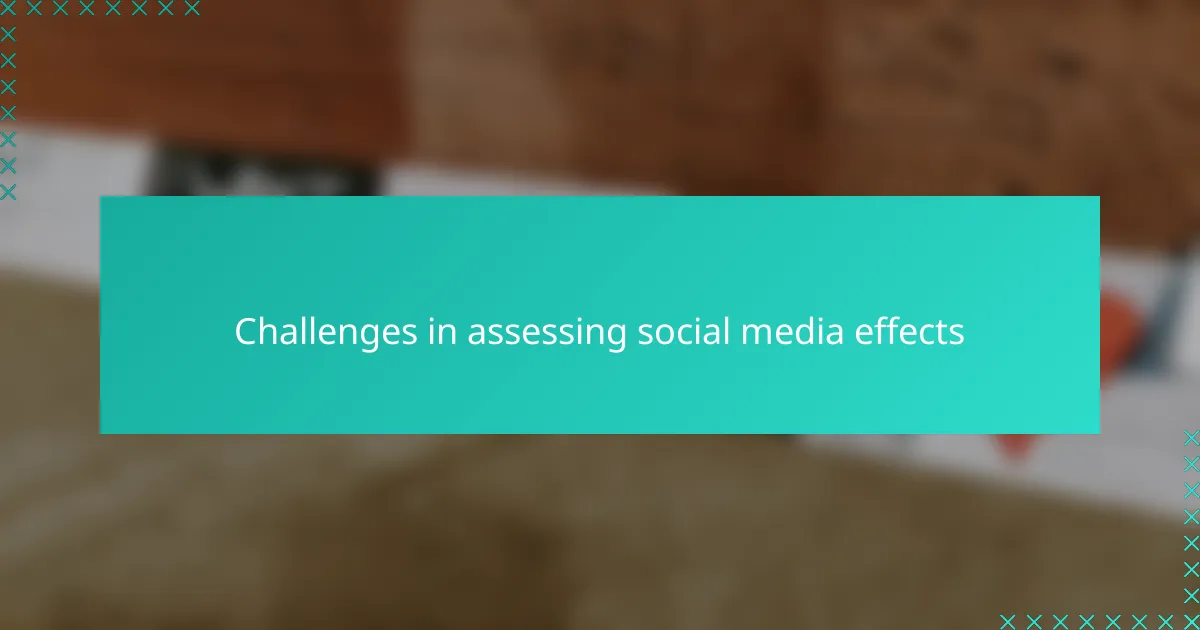
Challenges in assessing social media effects
Assessing social media’s effects on elections felt like trying to pin down quicksilver. One day, a viral post seemed to shift public opinion wildly; the next, it vanished in a sea of competing narratives. Have you ever tried to measure something so fluid and fast-moving? My experience taught me that the speed and scale of information flow make it incredibly tough to distinguish genuine influence from fleeting noise.
Another challenge I kept bumping into was the sheer diversity of platforms and user behaviors. Twitter, Facebook, Instagram—they each have unique cultures and algorithms shaping what content surfaces. It made me wonder: can a single analysis framework ever capture such a fragmented digital landscape accurately? From what I observed, any assessment risks oversimplifying or missing crucial nuances if it treats social media as a monolith.
Then there’s the inscrutable role of algorithms behind the scenes. These hidden gatekeepers decide what content users see, but their criteria remain largely opaque. I often found myself frustrated, asking—how much of the observed impact is driven by user choice versus algorithmic push? This uncertainty complicates efforts to untangle cause and effect, reminding me that evaluating social media’s real power is as much art as it is science.
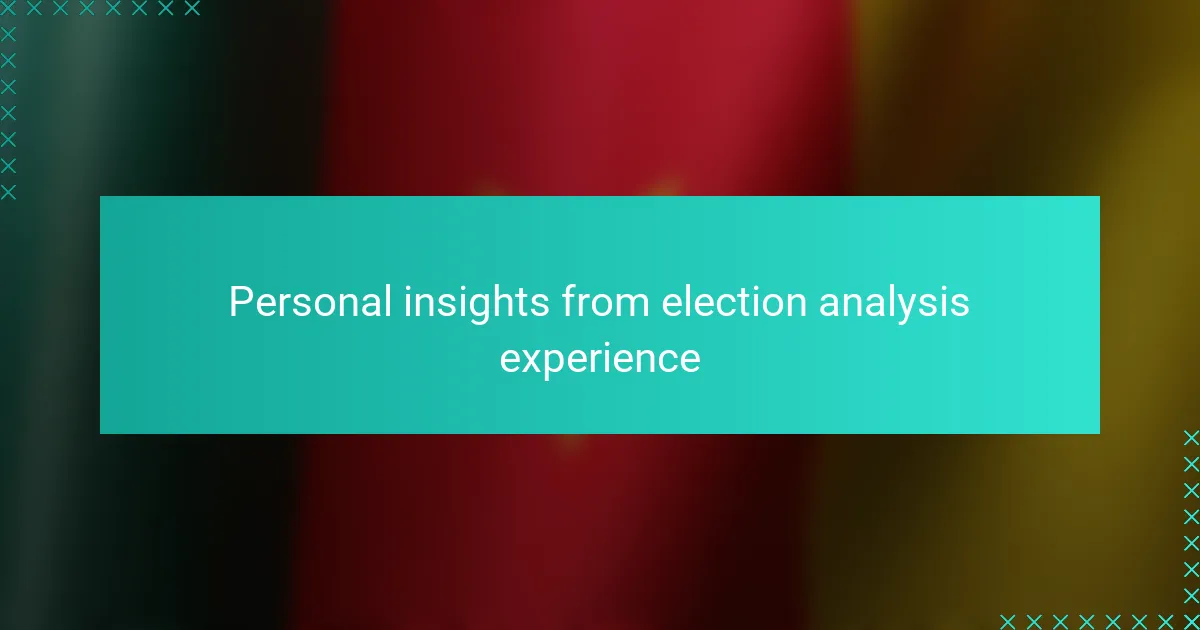
Personal insights from election analysis experience
Diving into social media’s role in elections revealed to me just how unpredictable public response can be. I recall analyzing a heated online debate that seemed poised to tip voter sentiment, only to see the momentum evaporate hours later—have you ever felt that moment when your carefully read data suddenly slips through your fingers? That unpredictability keeps me both humble and curious in this field.
I’ve also noticed how personal biases subtly influence which signals we prioritize during analysis. Early on, I caught myself giving more weight to posts that echoed my own political leanings, which made me pause and reflect: how often do our own perspectives color what we perceive as impact? Addressing that internal challenge enriched my approach, pushing me to seek broader viewpoints before drawing conclusions.
Finally, there’s an emotional layer to this work that often goes unspoken. Tracking the spikes of outrage, hope, or fear in online conversations made me realize that elections aren’t just numbers—they’re reflections of collective moods and anxieties. Understanding that human element transformed my analysis from mere data crunching into something deeply human and, honestly, quite moving.
